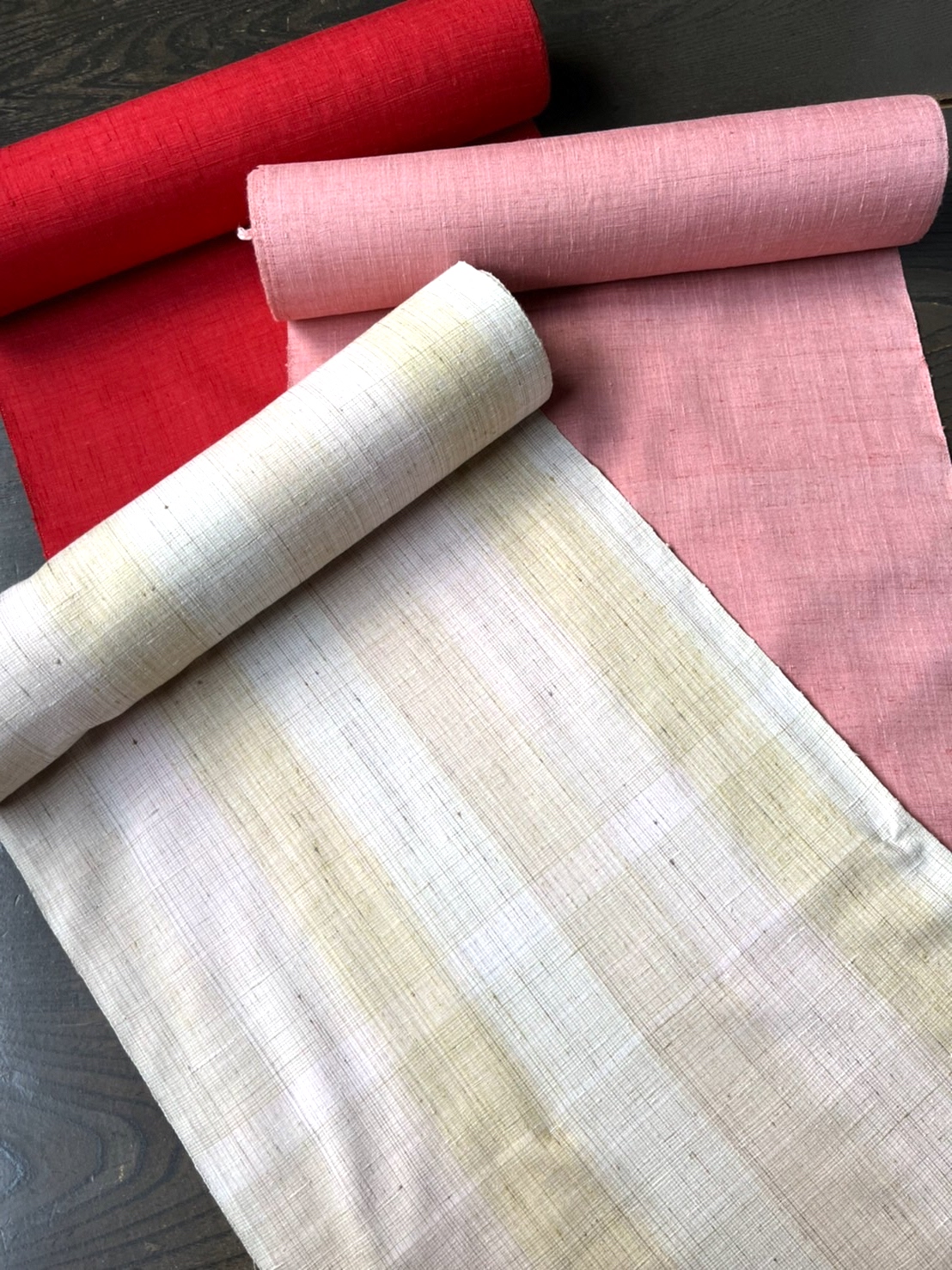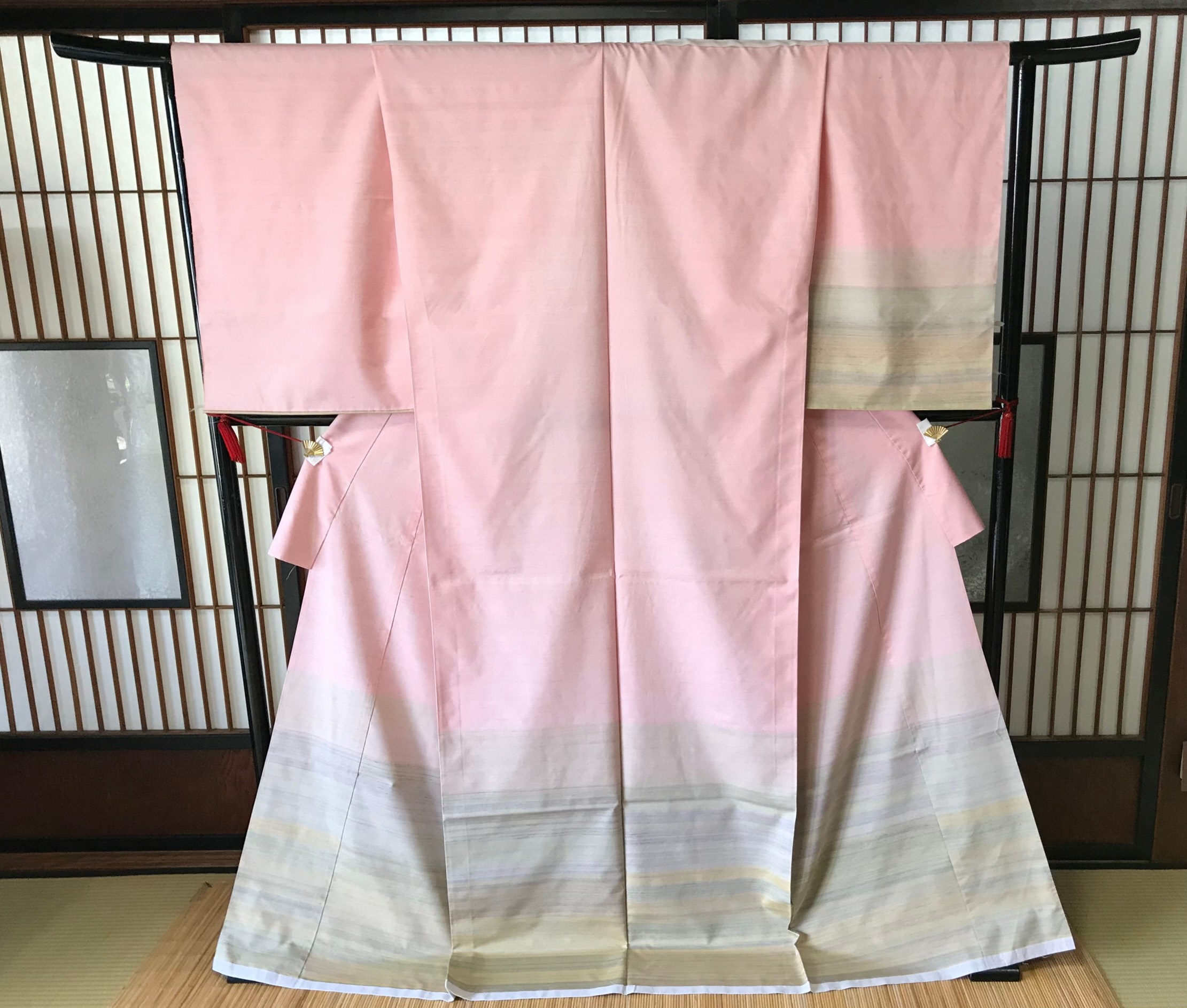米沢織(米沢紬)
Pronunciation: Yonezawa-ori (Yonezawa-tsumugi)
Production area: Yonezawa City, Yamagata Prefecture
Yonezawa-ori (Yonezawa-tsumugi) is a silk textile characterized by its rustic beauty, dyed exclusively with natural dyes such as safflower. Its production is said to have begun under the ninth lord of the Yonezawa domain, Mr. Yozan Uesugi, who promoted Tsumugi production as part of his domain reforms to revive the local economy through sericulture and silk weaving. Yonezawa-tsumugi is produced by the Sakizome (pre-dyeing) method, in which the threads are dyed before weaving, resulting in a soft and gentle texture. The basic structure uses Tsumugi and tama silk threads woven in plain weave, often featuring lustrous and beautiful Kasuri (ikat) patterns. In addition to solid colors, there are plaid, striped, and wavering designs. Because each pattern is created by combining pre-dyed threads one by one, Yonezawa-tsumugi has a unique charm distinct from post-dyeing.
・See Also: Traditional Craftsmanship vol.6 "Yonezawa -ori"|Yamagata
・Kimono-en Instagram-Introduction to Yonezawa -ori
The Beauty of Benibana-tsumugi
Benibana-tsumugi, dyed with safflower, has a gentle impression with stripes and checks in shades of red, yellow, and orange, standing out for its brightness among the often subdued Tsumugi textiles. During the Edo period, safflower dye also supported the domain’s finances as a precious ingredient for lipstick. Since 99% of safflower pigment is yellow and only 1% is red, as many as 900,000 blossoms were required to dye a single bolt. Its rarity made safflower more valuable than rice and even gold. The yarns dyed with safflower take on a delicate pink when exposed to sunlight, with colors shifting depending on temperature and humidity.

Photo courtesy ofPhoto courtesy of Yonezawa Textile Association

Photo courtesy ofPhoto courtesy of Yonezawa Textile Association



















